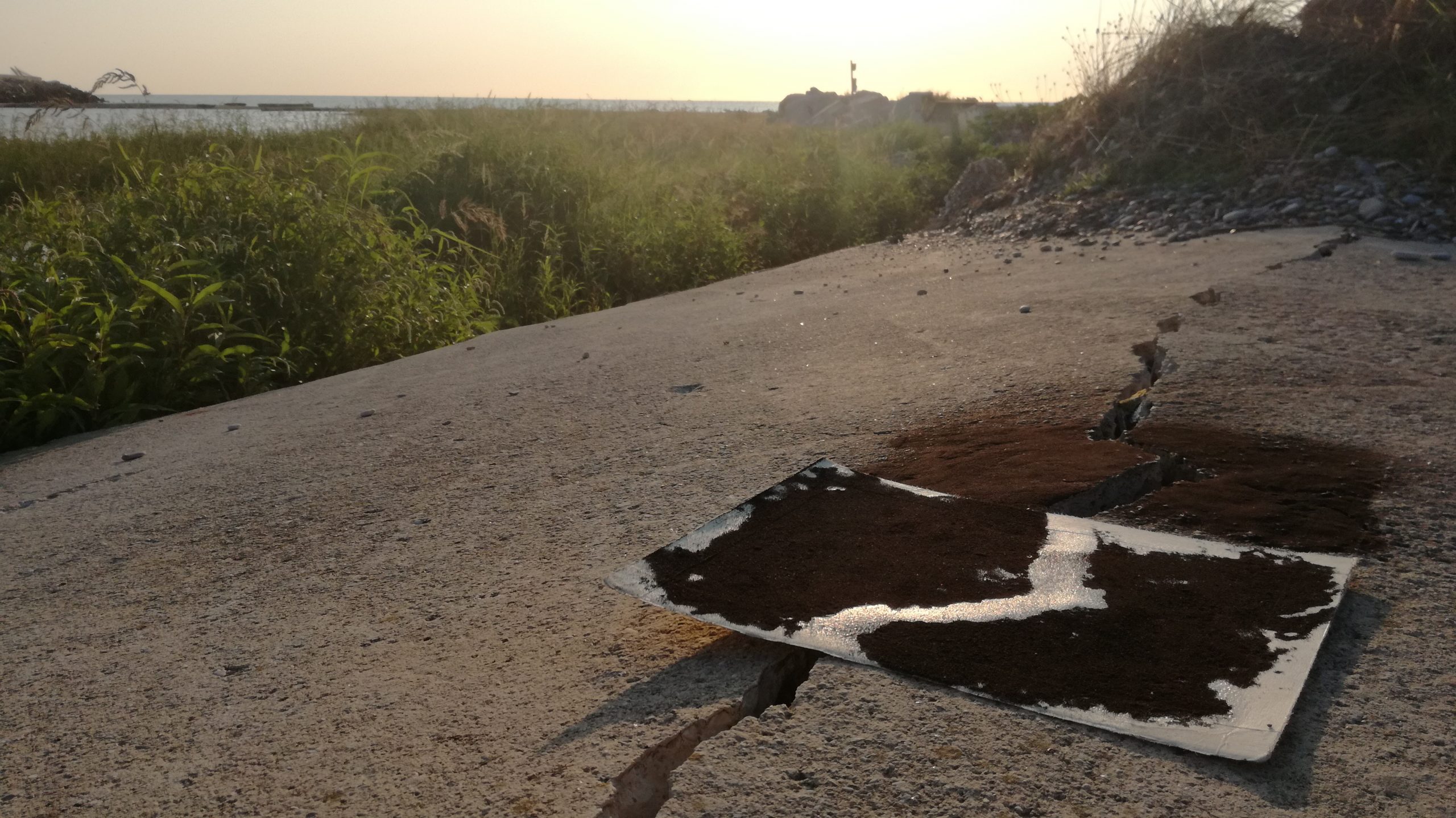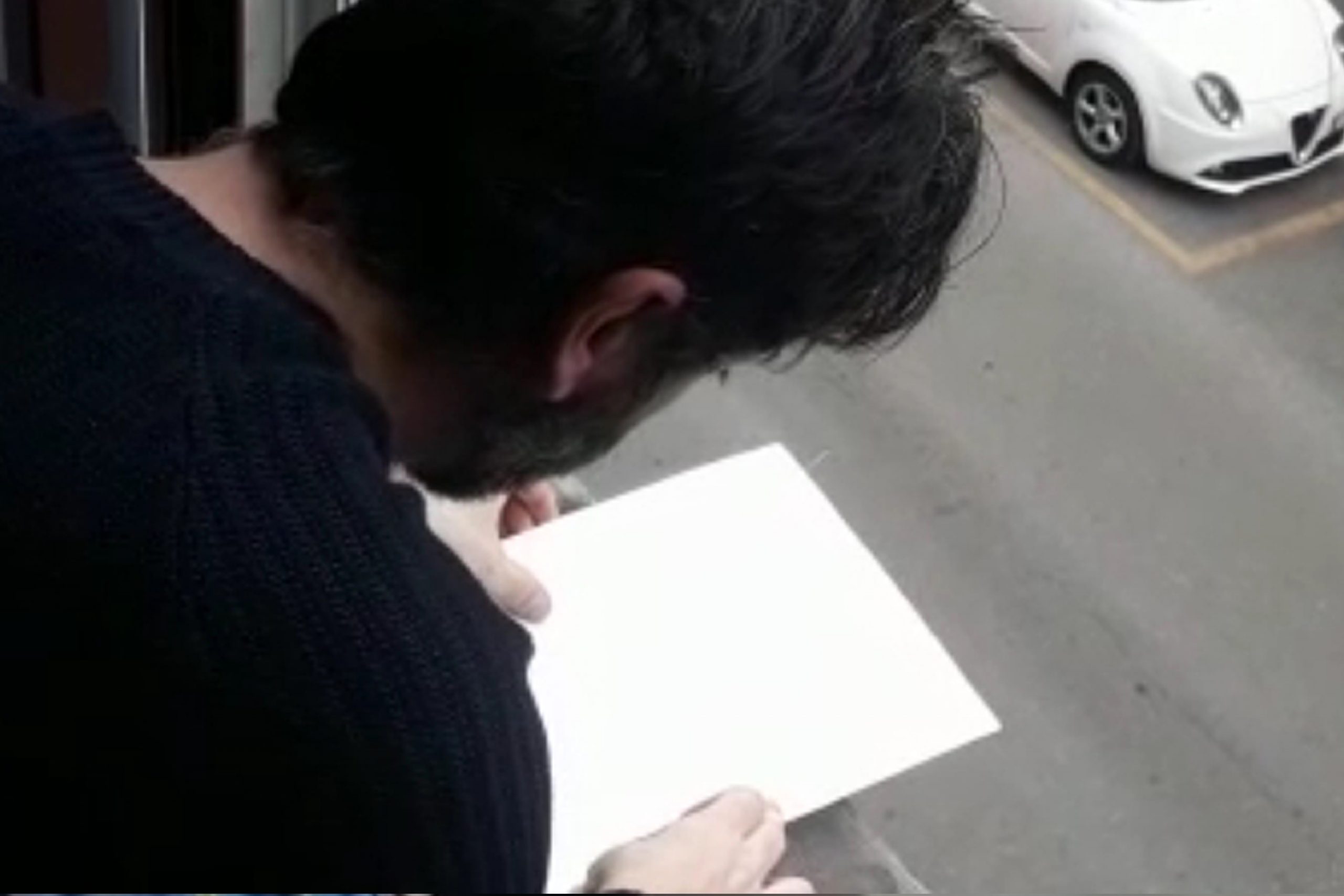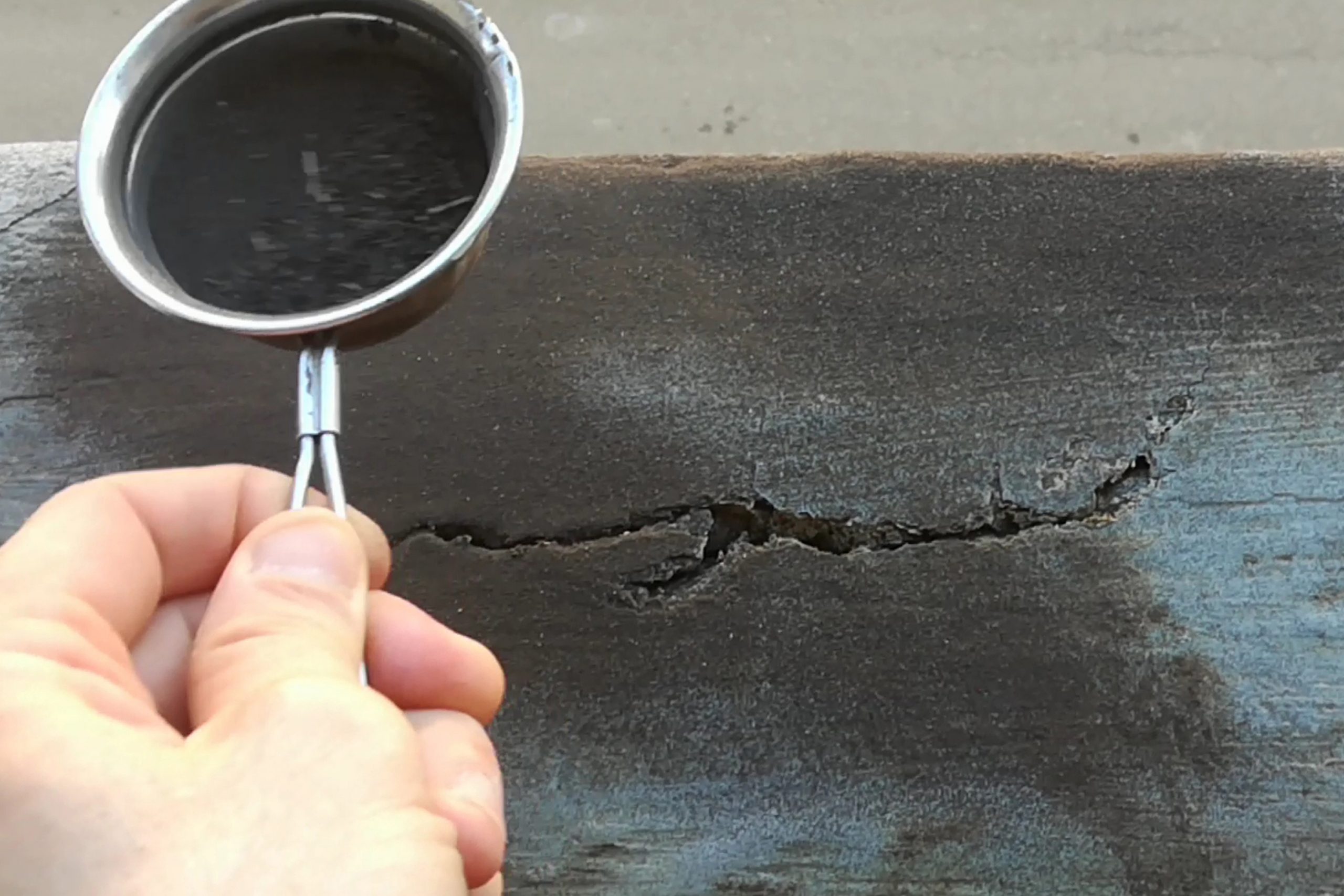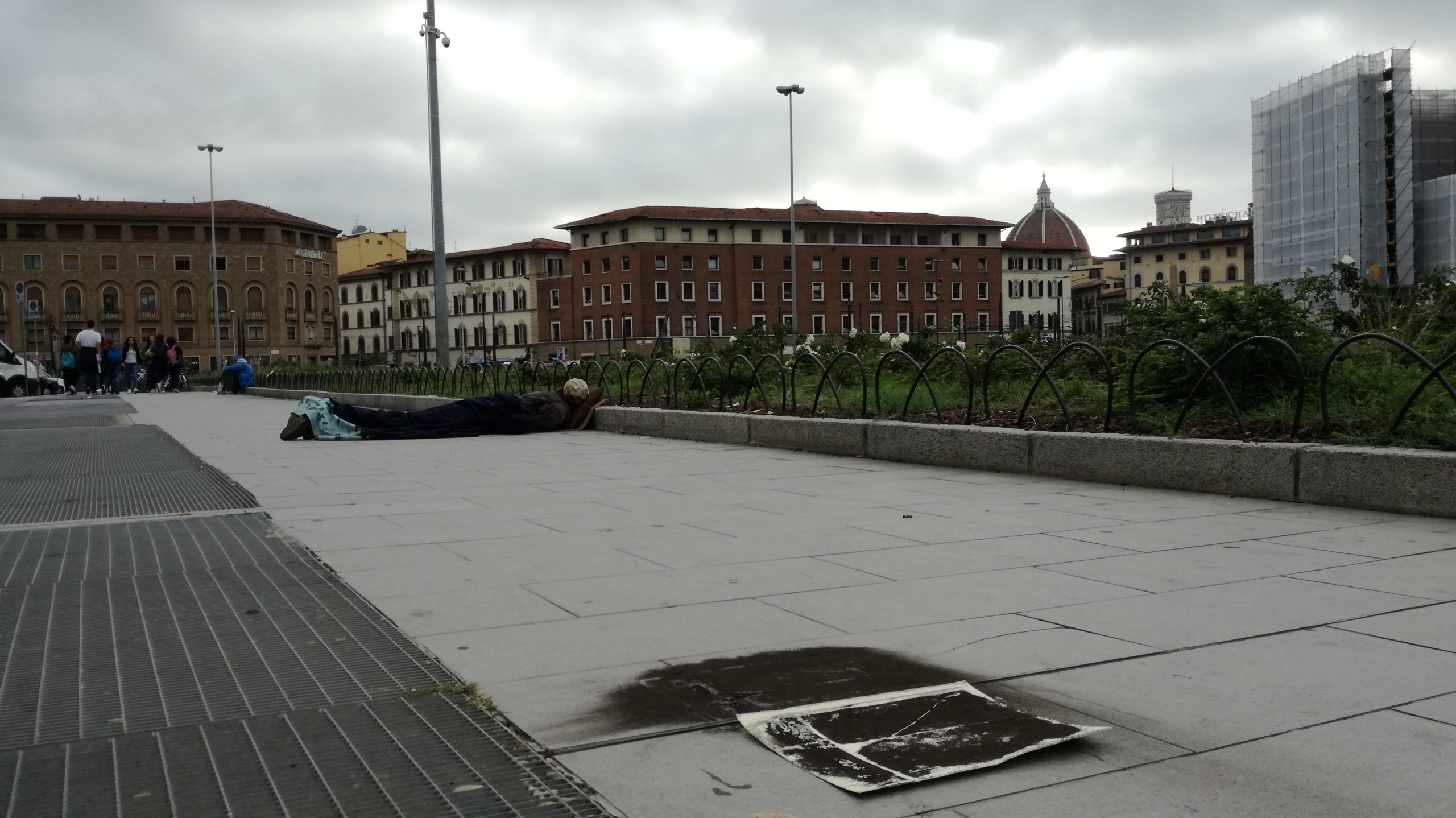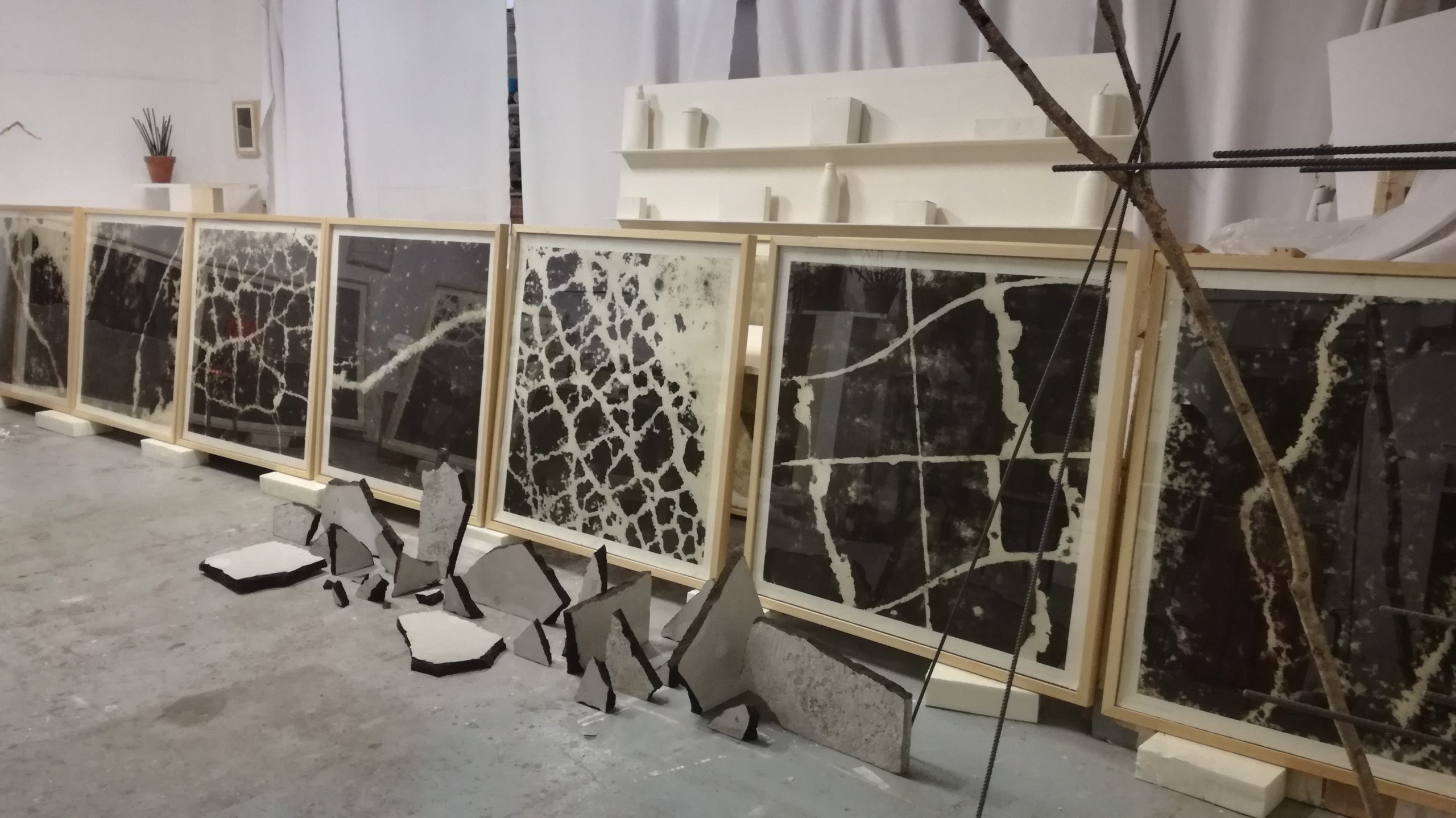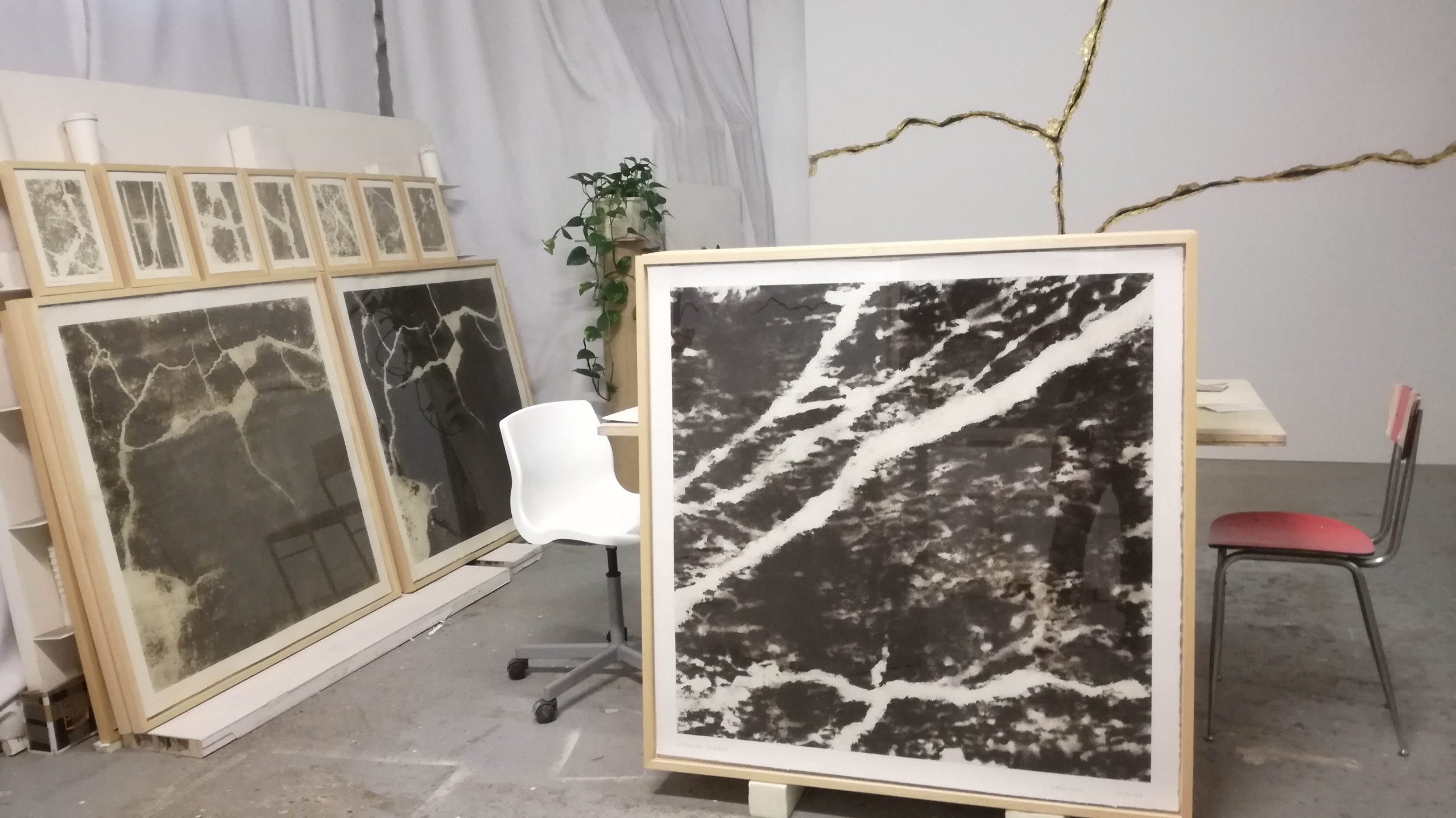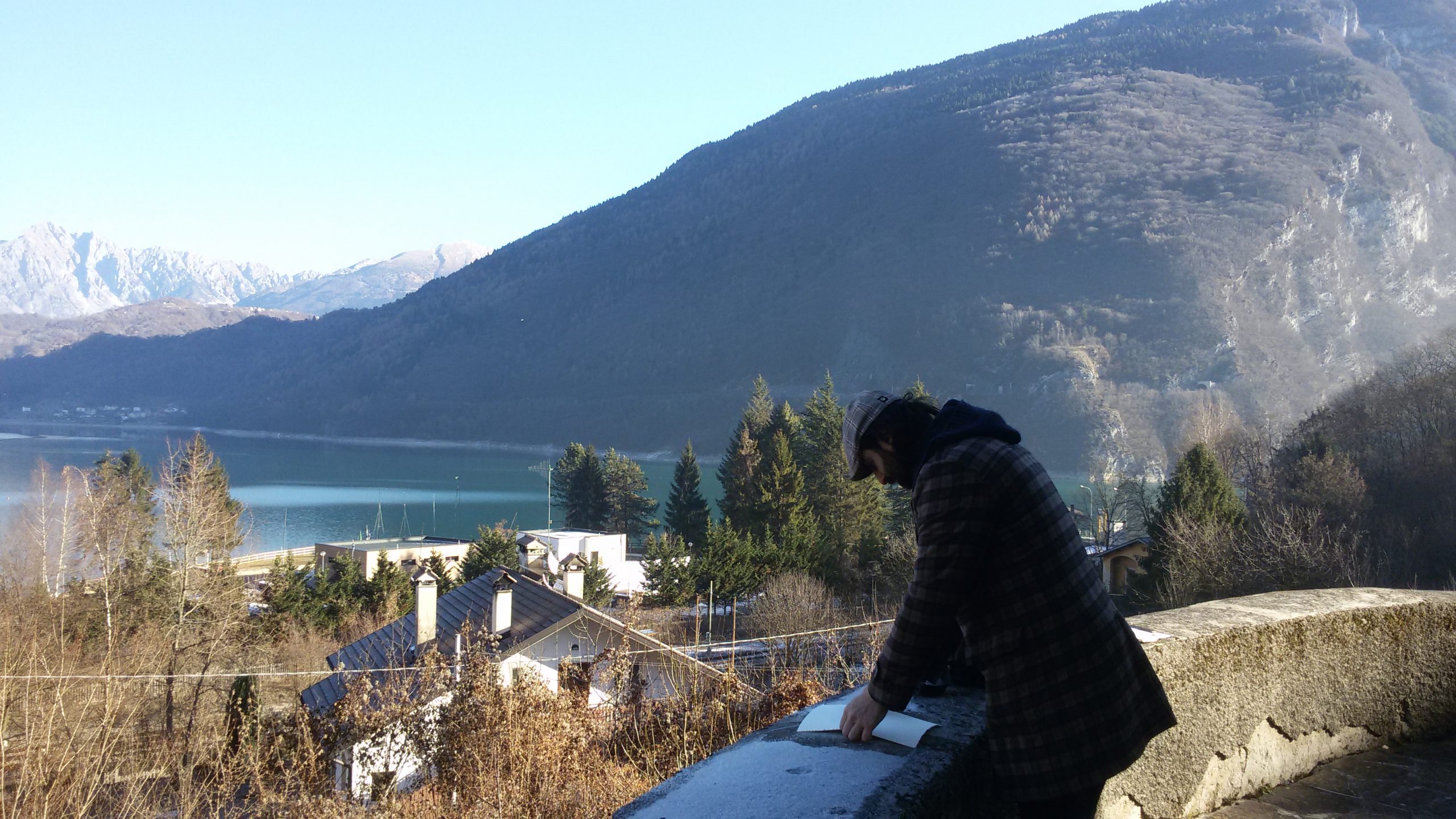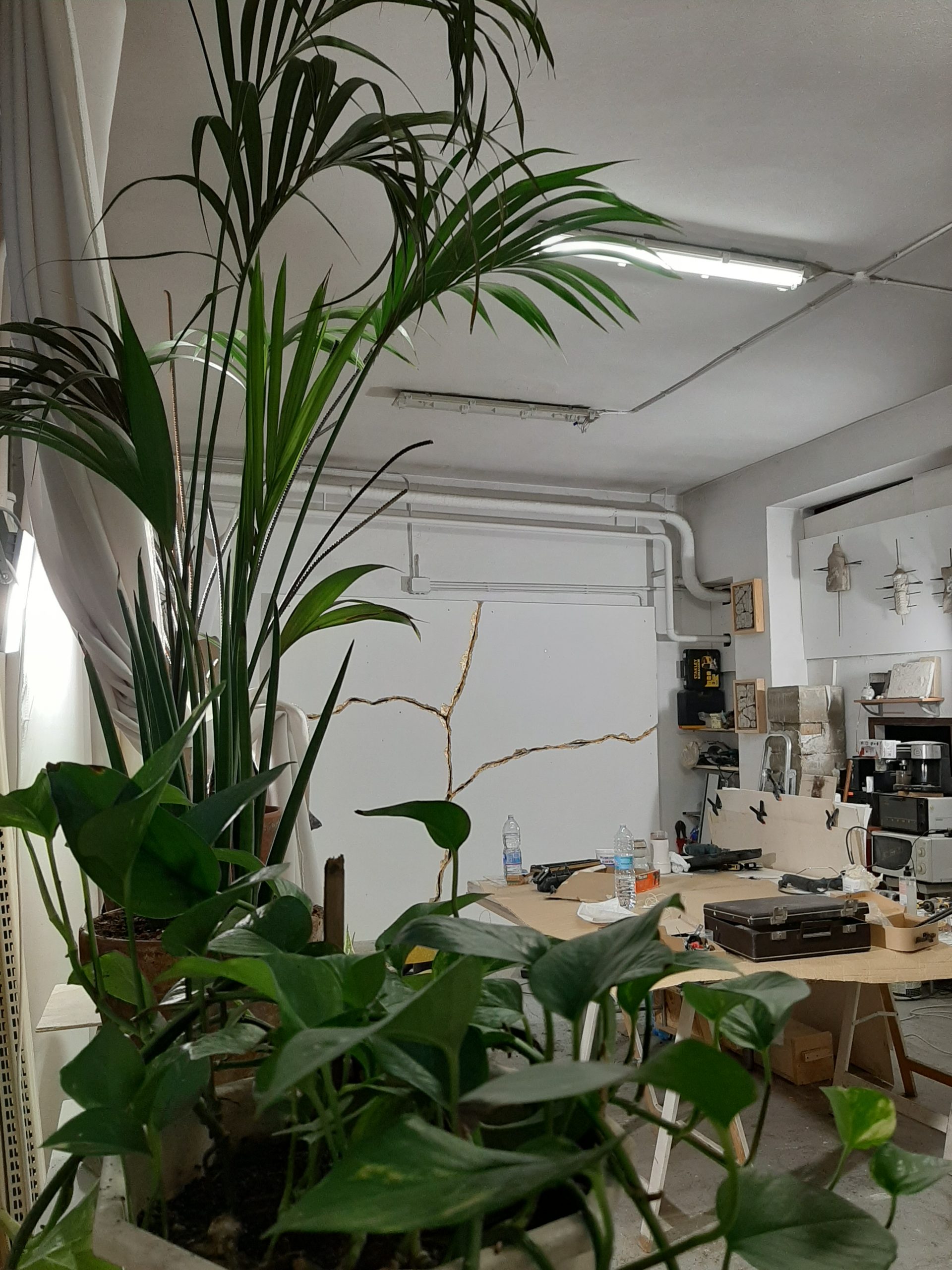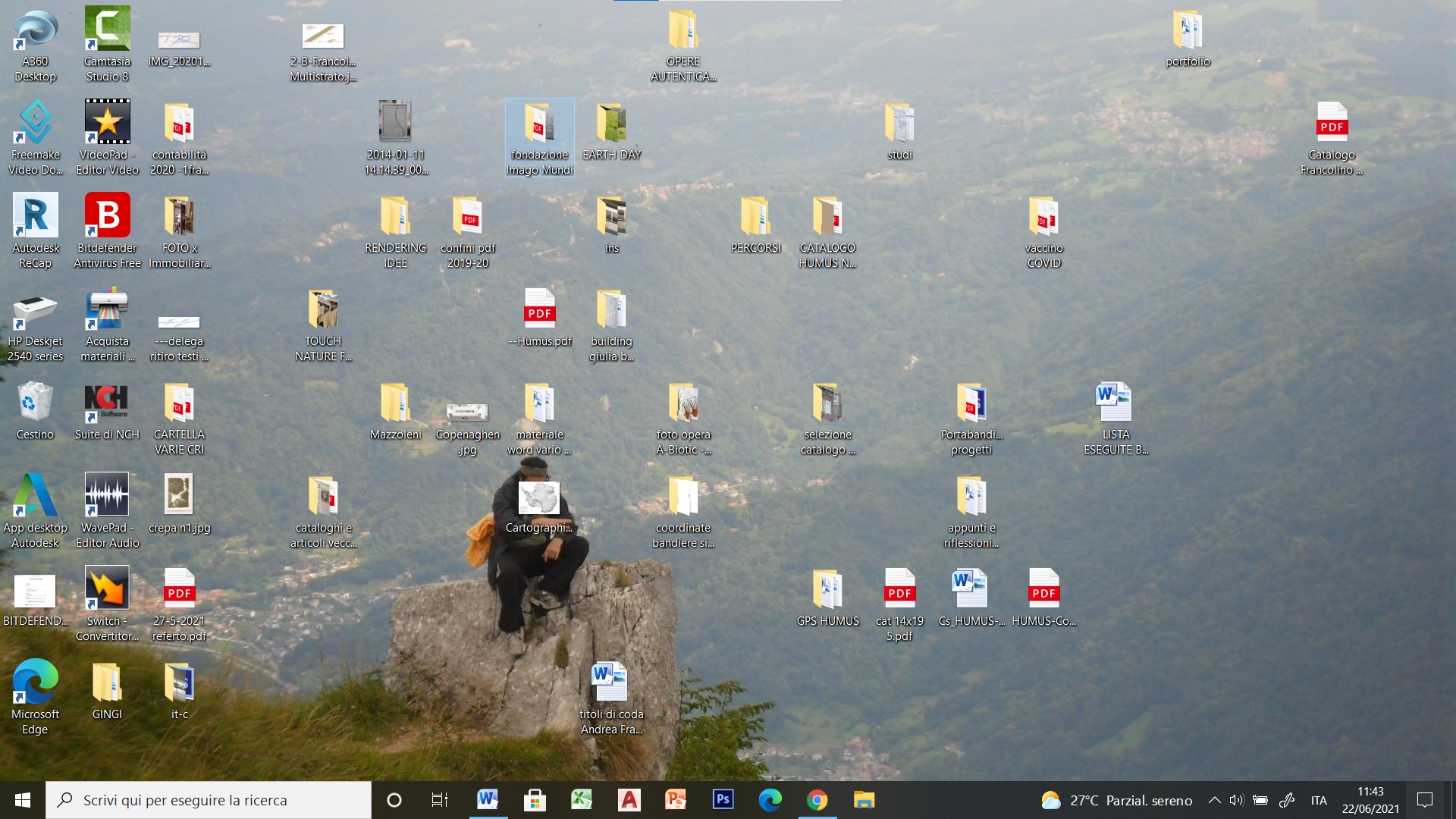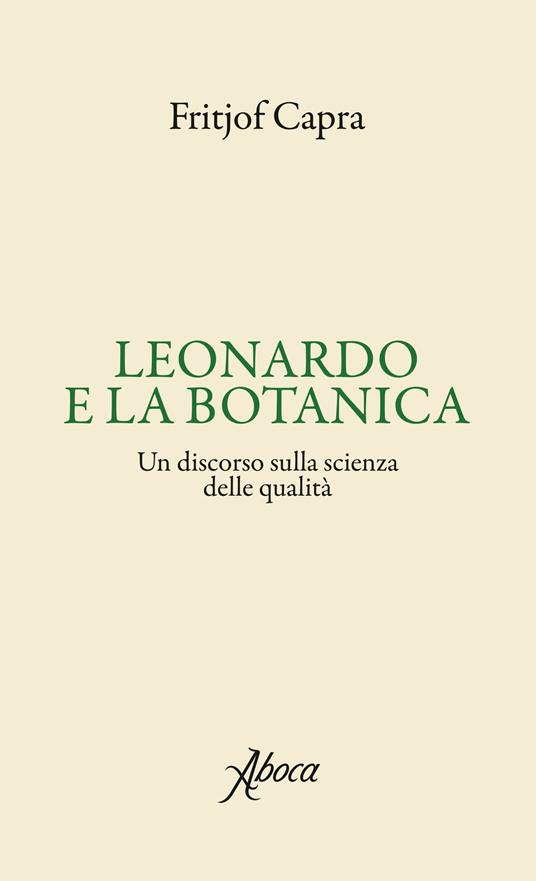
Your practice is inherently nomadic, taking place mainly outdoors and in close contact with the earth. You need to walk, to capture the randomness of these cracks that are symptomatic of a living planet that is in constant motion, and of all a series of phenomena that, though out of our control, are anything but random. With the imprints of the cracks that you trace, your art ends up in measuring with our existential dimension, revealing the minimal space our body occupies on this planet, and our impotence in the face of certain inexorable phenomena. As with the pandemic, which has restricted the field of action to the home.
Then one day, looking out of the window, you saw a crack, right on the threshold between the domestic space and the space of the world that was temporarily denied to us. This vision was a thunderbolt, a manifestation of this particular historical moment. Can you tell us which reflections triggered this aesthetic epiphany?
These cracks are the key, an answer as well as an origin. They’re always relevant, as in this case. The day I found myself confined to the house, I was working on a project that required me to travel in different places tracing cracks with dust from the earth. This was a continuation of an initial one-year project, carried out instead with reclaimed concrete dust. Then, unable to move, I felt helpless, wondering how to complete this work.
But for me, the crack is not only to be considered in the most limited sense of rupture. In my research, the crack is a trigger that generates infinite reflections, which can lead me towards multiple disciplines, the meaning of which I only discover later, even while following diametrically opposed approaches that oscillate from the existential to the scientific.
In those early days of lockdown, looking out the window to see what it produced in terms of city-wide desolation, I found a crack there on the windowsill. So I thought that, in addition to being an alternative to completing the annual dust journey without choking it because of the pandemic, that crack could also become a testimony to a historical moment, within the work.
So, almost every day and when nature allowed me to do so, I made a cast of it, at different times of the day, capturing it on the threshold, between me and the world.
Therefore, a project that began almost a year before in a completely different way with both a temporal and a material wandering, now that it has concluded, presents a repeated trace of the “suspended” temporal reality of the days of the lockdown.
Then, as with every project I do, I’ve documented it with a book, accompanying each crack trace with a photo, the geographical location, date, and time when and where I took it.
Let me tell you an important behind-the-scenes fact: a crack of the crack happened, as the photographic material accompanying a series of casts/moments has been damaged, probably due to a fault with the computer. However, I eventually decided to also include these errors in the documentation, viewing these damaged jpegs as symptoms of vulnerability that is not only material, but also technological. I see here another truth of this period, which I felt it was legitimate to give a value to. This second chapter is to date still an unpublished work.
From this description of your work and your approach, there emerges a quite profound awareness of artistic making and its motivation. This period of suspension, crisis and uncertainty has forced many people to reflect in particular on their role within the social context and in relation to their community. To date, what function does your practice have?
When everything reopened after the first lockdown, I made some casts at the Italian border, voluntarily isolating myself in almost monastic concentration in close contact with nature.
The wandering there forced me to deal with issues such as the limit, and to reflect again on the relationship between the evolution of man and the wonder of nature, between the sense of things and the sense of creation, between human actions and the nature of being.
However, so far the crack has generated many works, which have not necessarily manifested themselves with its representation. This is the case with a project with a series of flags that I exhibited at the Museo del Novecento in Florence: it was a reflection on how a flag that unites all of humanity might look. I made it in bamboo, earth dust and a jute cloth: the same fabric that serves to protect the earth from erosion, from the breakage generated by violent climatic events. The crack is there too, but it is latent: even if you can’t see it, it emerges in the fracture between humanity and the equilibrium of the planet that manifests itself with climate change.
I am a person who tends to open brackets all the time, and this can also be found in my research: the theme of the crack does not set me limits, but becomes a pretext, which continuously opens up to new possibilities, yet with a capacity to always stay relevant, regardless of the historical moment in which it exists
It is fundamental for me to try to maintain a coherence in my research and in the use of materials in particular, as with my commitment to having a limited ecological impact without negatively affecting the final quality of the work. The crack is a concrete element, with infinite possibilities within, but also around it.
It is not negative or positive, but it can be either one or the other: I see it as an objective manifestation that opposes opposites, in a universal way. That’s why I like to activate reflections through it. The crack as an opening and possibility, even of a relationship. I believe an artwork should be able to open up with meanings and succeed in driving comments and reflections, which emerge in the public as in an endless process, as it touches on issues that we all share.























